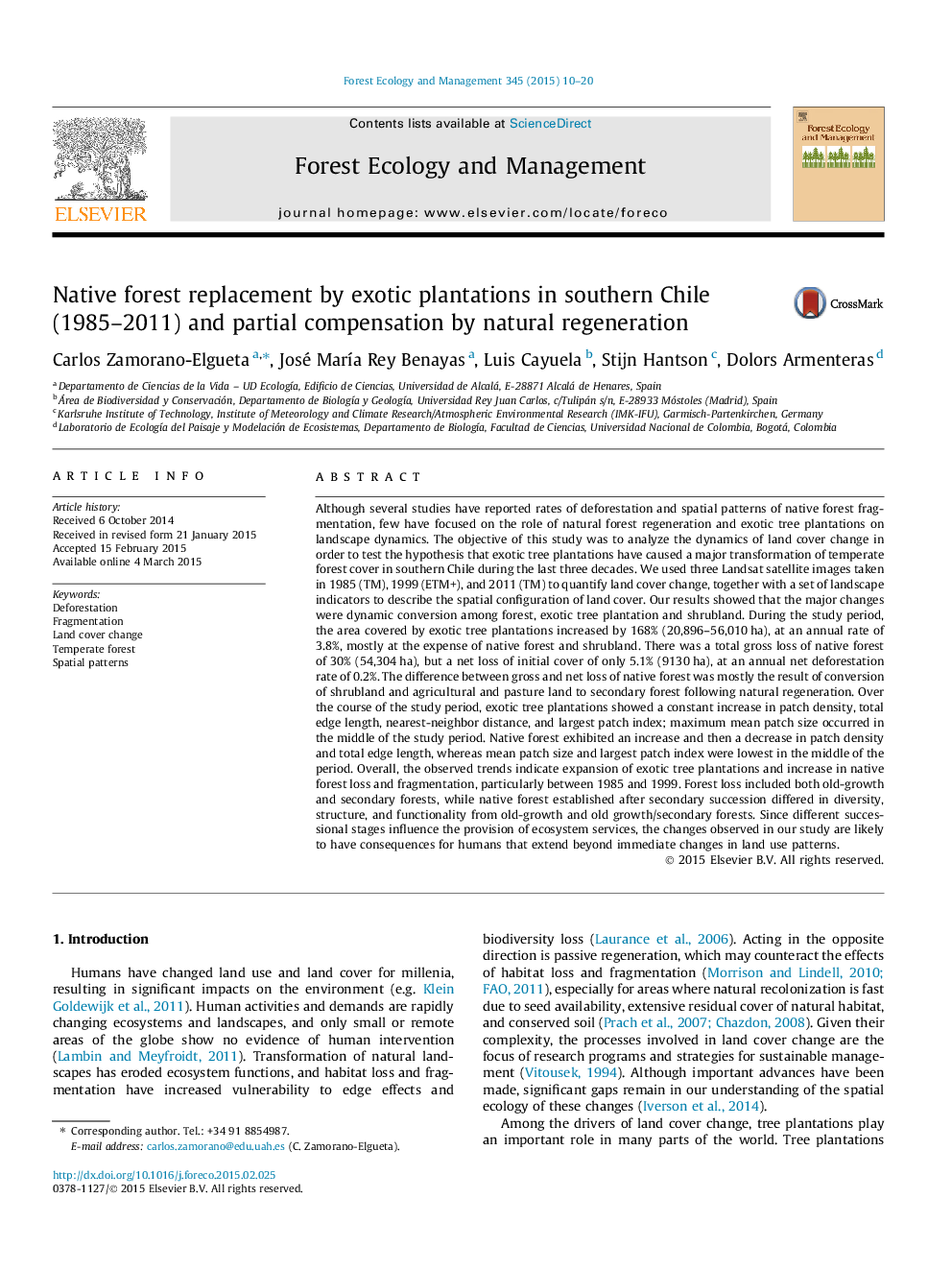| کد مقاله | کد نشریه | سال انتشار | مقاله انگلیسی | نسخه تمام متن |
|---|---|---|---|---|
| 86366 | 159182 | 2015 | 11 صفحه PDF | دانلود رایگان |

• We analyzed land use change in southern Chile between 1985 and 2011.
• Tree plantations increased mainly during 1985–1999 (+168%).
• There was a dynamic conversion among forest, exotic tree plantation and shrubland.
• Natural forest regeneration on abandoned areas partly compensated forest loss.
• These changes could affect the ecosystem service provisions at the landscape scale.
Although several studies have reported rates of deforestation and spatial patterns of native forest fragmentation, few have focused on the role of natural forest regeneration and exotic tree plantations on landscape dynamics. The objective of this study was to analyze the dynamics of land cover change in order to test the hypothesis that exotic tree plantations have caused a major transformation of temperate forest cover in southern Chile during the last three decades. We used three Landsat satellite images taken in 1985 (TM), 1999 (ETM+), and 2011 (TM) to quantify land cover change, together with a set of landscape indicators to describe the spatial configuration of land cover. Our results showed that the major changes were dynamic conversion among forest, exotic tree plantation and shrubland. During the study period, the area covered by exotic tree plantations increased by 168% (20,896–56,010 ha), at an annual rate of 3.8%, mostly at the expense of native forest and shrubland. There was a total gross loss of native forest of 30% (54,304 ha), but a net loss of initial cover of only 5.1% (9130 ha), at an annual net deforestation rate of 0.2%. The difference between gross and net loss of native forest was mostly the result of conversion of shrubland and agricultural and pasture land to secondary forest following natural regeneration. Over the course of the study period, exotic tree plantations showed a constant increase in patch density, total edge length, nearest-neighbor distance, and largest patch index; maximum mean patch size occurred in the middle of the study period. Native forest exhibited an increase and then a decrease in patch density and total edge length, whereas mean patch size and largest patch index were lowest in the middle of the period. Overall, the observed trends indicate expansion of exotic tree plantations and increase in native forest loss and fragmentation, particularly between 1985 and 1999. Forest loss included both old-growth and secondary forests, while native forest established after secondary succession differed in diversity, structure, and functionality from old-growth and old growth/secondary forests. Since different successional stages influence the provision of ecosystem services, the changes observed in our study are likely to have consequences for humans that extend beyond immediate changes in land use patterns.
Journal: Forest Ecology and Management - Volume 345, 1 June 2015, Pages 10–20